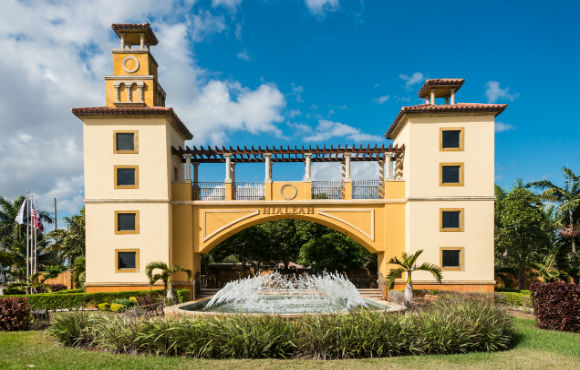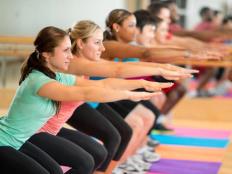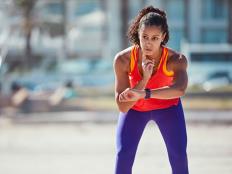That’s why WalletHub put together a panel of experts to analyze which U.S. cities rank best and worst for an active lifestyle. Pulling data from sources like the U.S. Census Bureau, Centers for Disease Control and Prevention and Walk Score, the panel determined which cities have the most physically active populations—and which come up short. You can read the full report and an explanation of the methodology here.
Is your city among the worst?
10. Jersey City, N.J.
1 of 11
Despite having over 30 miles of waterfront and parkland, Jersey City can't escape inclusion on our list. The second most populous city in the state ranks especially low for "Fewest Playgrounds per Capita," with 17 times fewer play areas than the cities at the top of the list.
How can Jersey City encourage its youngest citizens to be more active? According to expert David Elmer, Assistant Professor for the Department of Kinesiology at Berry Collage, "Family walks or runs (if the age of the children and health of the parents make this possible), trips to the park, riding bicycles together and active games are all ways that you can be active as a family and establish a support structure for healthy behaviors as a normal part of life."
9. Memphis, Tenn.
2 of 11
Home to great music, amazing barbeque and over 650,000 people, Memphis majorly improved its ranking in 2018, dropping to No. 8 on the list after taking the No. 1 spot last year. However, the Home of the Blues still scored only 27.8 out of a possible 100 points, and ranks towards the bottom on several of the study's key indicators of an active lifestyle.
8. Garland, Texas
3 of 11
The first of four Texas cities on the list, Garland is a newcomer to the top 10 this year. The city has the fewest playgrounds per capita of all 100 cities considered—17 times less than the city with the most (New York).
Sharon Brown, Professor of Exercise Science at Transylvania University, believes that cities like Garland should invest money in building and improving the infrastructure for outdoor play. "Studies have shown that if you build playgrounds, basketball courts and tennis courts, people who live in the neighborhood will use them," she says. "It is no surprise. If you don't build in easy access to outdoor recreation, people will not be as active."
Photo by Michael Barera
7. Laredo, Texas
4 of 11
Known as "The Gateway City," Laredo sits on the north bank of the Rio Grande directly across from Nuevo Laredo, Tamaulipas, Mexico. The city ranks third in fewest fitness centers per capita, third in fewest public golf courses and fifth in the nation for highest percentage of inactive adults.
What can Laredo do to get their population moving? Christopher Hopper, Professor of Kinesiology at Humboldt State University, says, "We should encourage people to think about how daily routines can be adjusted to provide increased lifestyle physical activity, such as taking the stairs rather than the elevator."
6. Arlington, Texas
5 of 11
Texas makes a third (but not final) appearance on the list with Arlington, a principal city with a large population of almost 380,000 residents. Despite being home to two major sports teams (the Texas Rangers and the Dallas Cowboys), the city scored surprisingly low in access to sports facilities and outdoor recreation. For example, it has the third fewest basketball hoops per capita of all 100 cities.
While you might think that playing host to two major sports teams would be enough to encourage citizens of Arlington to be active, Elmer argues otherwise. "Professional sports and their facilities mostly encourage people to be bystanders and consumers of the on-field or on-court product," he says.
5. Newark, N.J.
6 of 11
New Jersey makes its second appearance on the list and takes the fifth spot with Newark. The city's especially low score in the Sports and Outdoors category reflects the fact that despite the city's large population, it ranks fourth in fewest playgrounds per capita and fewest public golf courses per capita. The city also comes in fourth for the fewest fitness centers per capita, which might be part of the reason why "The Brick City" contains a high percentage of physically inactive adults.
4. Bakersfield, Calif.
7 of 11
Sunny California may seem like the ideal location for folks who love sports and the great outdoors, but despite 161 days of clear blue skies each year, Bakersfield places second to last in the Sports and Outdoors category. This reflects the lack of physical activity infrastructure in place within the city, such as walking paths, playgrounds, tennis courts, fitness centers and swimming pools.
3. Irving, Texas
8 of 11
Texas makes a final appearance on the list with the city of Irving. This Dallas suburb ranks near the very bottom in the Sports and Outdoors category, thanks to very few public golf courses and tennis courts per capita.
Despite its lack of outdoor recreation infrastructure, Irving can still foster an active population. Brown has some tips for the 200,000-plus residents. "Have a personal built environment," she says. "Walk or bike instead of driving, take the stairs instead of the elevator, clean your own house, do your own outside work, cut your own fruit and vegetables, wash your own car or play with your dog. My own formula for everyone is: Move more, mostly outside, often with others."
2. North Las Vegas, Nev.
9 of 11
Sitting just outside of Sin City, North Las Vegas cracks the top three again in 2018. The city of 238,000 ranks second to last in the Budget and Participation category, meaning its residents do not have ample opportunity to participate in physical activity, whether it be due to high gym membership fees or low number of available sports clubs or pick-up leagues.
1. Hialeah, Fla.
10 of 11
Though Florida may conjure up images of healthy, active retirees enjoying the warm weather, this city in the Miami metropolis scores a measly 19.2 points out of a possible 100 to take the top spot. The city has one of the highest percentages of physically inactive adults, thanks to low scores in the Budget and Participation category and the Sports and Outdoors category.
The 225,000 residents of Hialeah can still improve their health with the incorporation of a simple activity: walking. Emily L. Mailey, Assistant Professor for the Department of Kinesiology at Kansas State University, recommends residents look for ways to incorporate walking into their daily routine. "That includes walking to run errands, taking the stairs whenever possible and parking farther away from stores and your workplace," she says. "The extra steps will add up across the course of the day and the week."
About the Author
Jennifer Fox
Get ACTIVE on the Go


Couch to 5K®
The best way to get new runners off the couch and across the finish line of their first 5K.
Available for iOS | Android





Discuss This Article